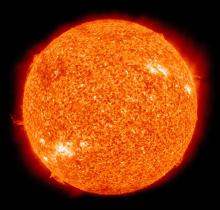Listen to today's episode of StarDate on the web the same day it airs in high-quality streaming audio without any extra ads or announcements. Choose a $8 one-month pass, or listen every day for a year for just $30.
You are here
Arthur Compton
Hubble Space Telescope may get all the attention, but it’s not an only child. It’s one of four space telescopes built to study the universe at different wavelengths: the Great Observatories. One of them was named for a physicist who was born 125 years ago today.
Arthur Holly Compton was born in Ohio in 1892. He developed an early interest in science, and earned his PhD in physics from Princeton.
Compton joined the faculty of the University of Chicago, where he studied X-rays. His experiments proved that X-rays and other forms of light can behave like solid particles. It was an astounding discovery — and it earned him a Nobel Prize.
Compton also studied cosmic rays — mysterious radiation from outside Earth. His work showed that the “rays” are actually solid particles with an electric charge, so they interact with Earth’s magnetic field.
During World War II, Compton was a key player in the development of the atomic bomb. He oversaw the construction of the first nuclear reactor, and led the creation of plutonium-fueled bombs.
Decades later, when NASA built a Great Observatory to study gamma rays, its detectors took advantage of Compton’s Nobel-winning discovery. So the agency named the telescope in his honor. And for a decade, scientists studied some of the most powerful objects in the universe with Compton Gamma-Ray Observatory.
Script by Damond Benningfield






